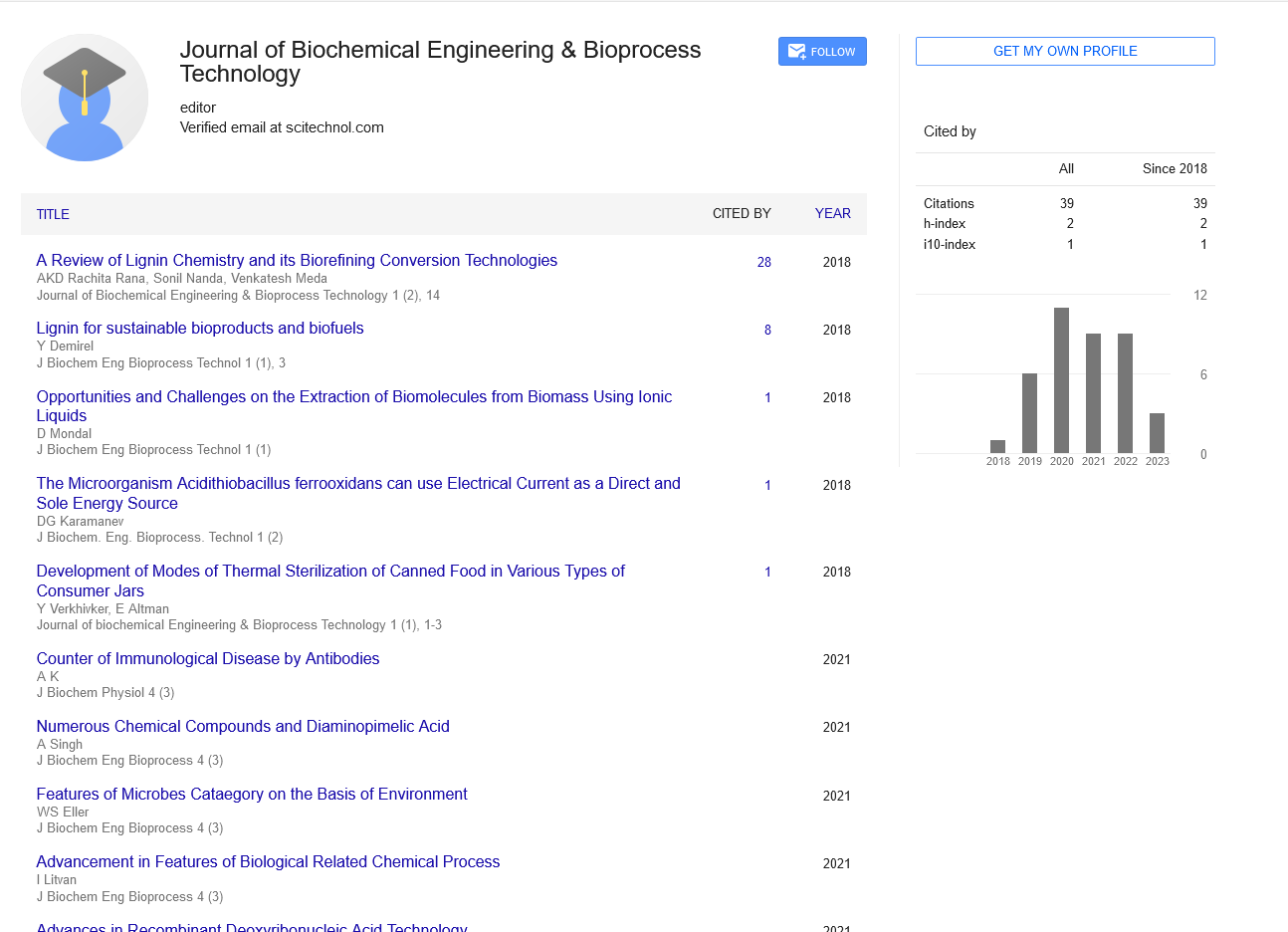Development of an integrated process model for the evaluation of biochar and activated carbon for wastewater treatment
Eliezer Reyes
North Carolina State University, USA
: J Biochem Eng Bioprocess Technol
Abstract
Activated carbons have been widely used as adsorbents in separation and purification processes for gaseous or aqueous solution systems. Currently, activated carbon production is divided into two main obtention processes. The first is physical activation, where the raw material is initially carbonized, and then carbonized material is activated by steam or carbon dioxide. The second is chemical activation, where raw material is impregnated with an activating reagent, and simultaneously heat-treated under an inert atmosphere at high temperatures (600-900°C). In the latter case, both carbonization and activation take place simultaneously. The physical and chemical properties of biochar, as well as the process design typically depends on the feedstock used and carbonization conditions (temperature, nitrogen flow and residence time). In addition, is well know that for activated carbons the adsorption capacity of heavier metals, salts, and organic or inorganic compounds seems to be highly influenced by pH, particle size, porosity, and activation temperature among others. Moreover, for good development of surface and structural properties as well as textural characteristics, low ash and high contents of ï¬Âxed carbon are desired. In this study, a short description of the production, characterization, and process modeling of the physical activation of agricultural and forest residues is performed, in order to analyze the feedstock impact into the process modeling, technology, configuration, heat requirements, potential use of alternative energy sources as natural gas, biomass, etc. An experimental plan is proposed in order to develop experimental data for a fully integrated engineering process model (ASPEN Plus) capable of evaluating different biomass features to accurately predict yields, process parameters, and potential performance of the resulting product for different types of wastewater streams. This ASPEN model will then be used for techno-economic analysis (TEA) in order to conduct the selection of the preferred material as a function of the water treatment application, e.g. organic or inorganic streams, as well as to evaluate process improvements.
Biography
E-mail: ereyesm@ncsu.edu
 Spanish
Spanish  Chinese
Chinese  Russian
Russian  German
German  French
French  Japanese
Japanese  Portuguese
Portuguese  Hindi
Hindi 